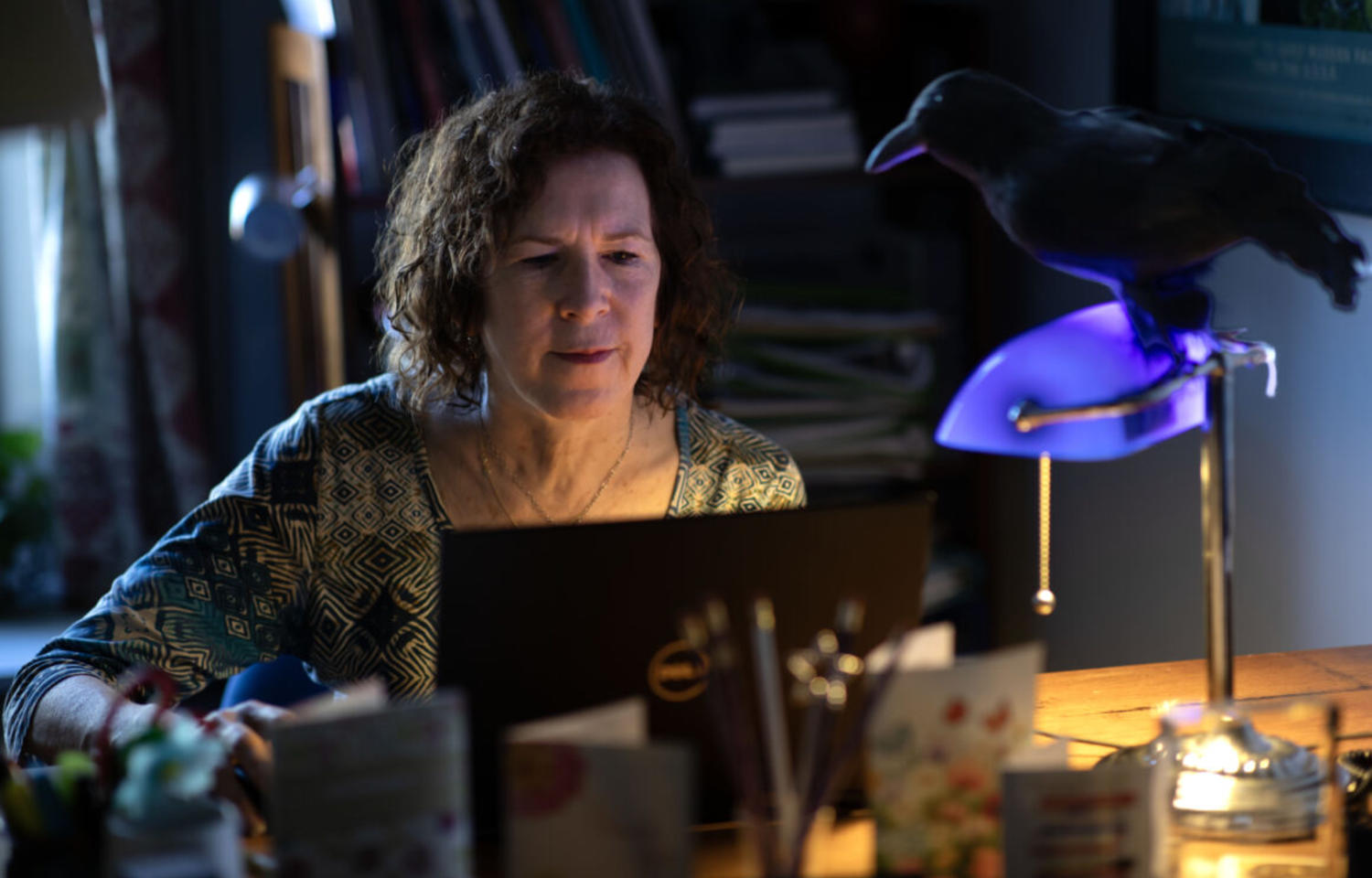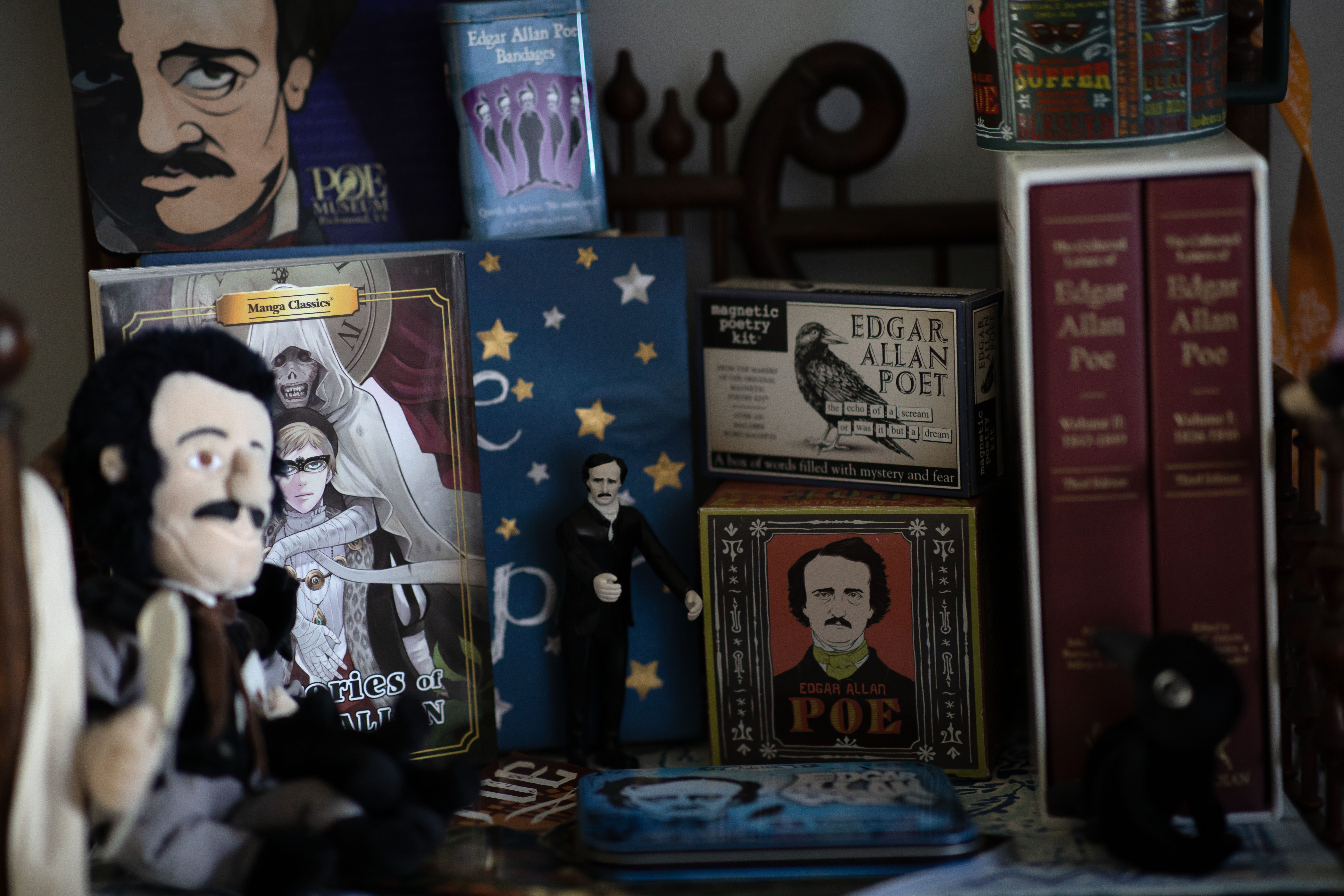"As an early 19th century writer, Poe was very much ahead of his time. He was an innovator and a pre-post-modernist writer, in some ways," she said. A literary pioneer, Poe is credited with creating the horror, detective fiction and science fiction genres. Sweeney argues that he should also be credited with being one of the first thinkers to suggest that everything in the universe is somehow connected, as illustrated in his book "Eureka: A Prose Poem."
"It’s a strange book, but its focus on the universe has since had Poe scholars and scientists, including Nobel laureates, suggesting that he anticipated string theory, the theory of relativity, and even the notion of the Big Bang," she said.
Perhaps because of Poe’s intense style and dark subject matter, he didn’t have much of a reputation in American literary criticism at first, failing to meet the standard narrative of American 19th century literature as represented by the likes of his contemporaries Henry David Thoreau and Herman Melville.
"Poe didn’t fit into any of the boxes. He exploded out of them," Sweeney said. Although works like "The Raven" were popular during his lifetime, Poe’s stellar literary reputation originated outside the United States, when he became incredibly influential in France during the late 19th century, and later in Spain and Latin America. Now he is one of the most popular, influential and significant American writers in the world, and several American cities compete to claim him as their own.
In her scholarship, Sweeney recognizes previously unconsidered influences in Poe’s writing, including ventriloquism and photography. She explained that the iconic image of Poe, with his sunken dark eyes, enormous white forehead and haunted expression, derives from a daguerreotype–an early photograph–taken a few days after a suicide attempt. Poe wrote several articles about photography, and his awareness of the camera influences his invention of new literary genres like the locked-room mystery and his descriptions of developing and exposing hidden images, Sweeney said. Meanwhile, his inclusion of eerie sound effects and voices from beyond the grave illustrates how he was influenced by "distant-voice" ventriloquists, one of the most popular forms of entertainment in the 1830s and 1840s.
Like a photographer or ventriloquist, Poe created representations of sights and sounds in his work that seem real, alive, and authentic, Sweeney said. This is partly because of his keen awareness of human thought and perception. His stories show his "understanding of the complexity of the human mind." Long before Sigmund Freud, psychoanalysis, or the development of psychology, Poe was already conceiving of different aspects of the mind such as the conscience, the unconscious, and what he called "the spirit of perversity," she said. Poe realized that "human beings have this perverse, willful, self-sabotaging tendency where, at times, we’re driven to do something that is against our own best interest."
Poe’s thinking about human behavior helped him to create a new kind of unreliable narrator, a character who is deceptive, self-destructive, perverse, or mad, and unable to control his own narrative, Sweeney said. This technique is perhaps best shown in "The Tell-Tale Heart," where Poe creates a narrator who has committed a murder, dismembered the body, and buried it, but is then unable to keep himself from confessing his crime to the police, despite the detectives being stymied in their investigation. Long after Poe’s death, readers are still uncovering new meanings in the stories that he told.




